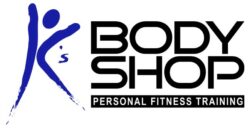October is Breast Cancer Awareness Month
Every October, Breast Cancer Awareness Month puts a spotlight on the disease that afflicts millions of women.
Rickye Lamm is among those who want to make sure exercise is always included in the conversation around prevention, treatment, recovery and support.
Rickye, 67, was diagnosed in 2001 and had operations on both sides a week apart, then underwent radiation treatment.
“Exercise really helped with my stress and state of mind,” says Rickye, who now works at a fitness studio. “I feel better now physically and mentally than I did in my 40s.”
Helping other women go through the disease, she’s even more of a believer: “If you’re physically fit, you recover from things better.”
Rickye is far from alone in making the connection between exercise and fighting cancer.
Leading Risk Factors of Breast Cancer
In the United States, 1 in 8 women will develop breast cancer at some point in her life, the National Breast Cancer Foundation says. A diagnosis is made every two minutes.
Globally, breast cancer is the No. 1 cancer among women, the World Health Organization says.
Men can get it, too, but in far lower numbers. Aside from gender, age is the top risk factor. Two-thirds of invasive breast cancers occur after age 55, says BreastCancer.org. Family history, race, genetics and more factors also play a risk.
A healthy lifestyle should include exercise – which also helps limit other factors like obesity and blood pressure, before and after cancer. It can regulate hormone levels, strengthen the immune system and more, experts say.
“People are much more likely to survive cancer who exercise,” says Andrea Leonard, president and founder of the Cancer Exercise Training Institute (CETI). “That’s just a fact. There is no argument for not exercising.”
She stresses that each patient is different – each cancer, each treatment, each surgery, each recovery.
After treatment, exercise helps restore self-esteem and a sense of control, which cancer strips from patients, she says.
“Teaching them to regain control empowers them, increases esteem and confidence, and takes them from victim to survivor,” she says.
Trying to stay healthy
Sally O’Loughlin, 75, knows all of that first hand, after bouts with leukemia and then breast cancer.
Sally works out with weights twice a week with a trainer. She also practices yoga and Pilates, walks, skis and eats right.
Sally says it’s the lifestyle she has adopted to stay as strong as possible and do what she can to prevent a recurrence. Her health is excellent now, with no sign of cancer.
“Exercise matters incredibly” after you’ve had cancer, she says. “It helps to keep stress levels down and makes me feel like I’m doing something positive and healthy.
“For someone my age, I’m incredibly fit and strong and I like that. I still go in for checkups every six months, and my doctor calls me his ‘rock star,’” Sally says. “That’s a nice thing to have your doctor tell you.”
- For more information about breast cancer, visit The National Breast Cancer Foundation.
Become a VIP Member to get monthly information about how fitness and nutrition can improve your life! It’s easy and FREE to join 🙂
